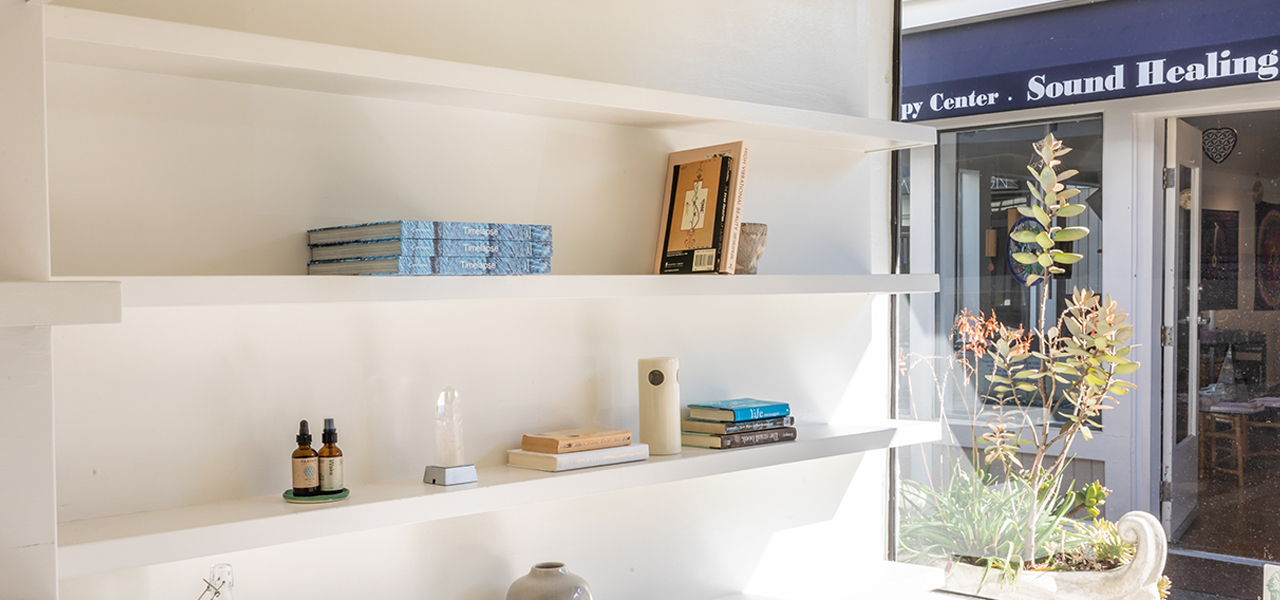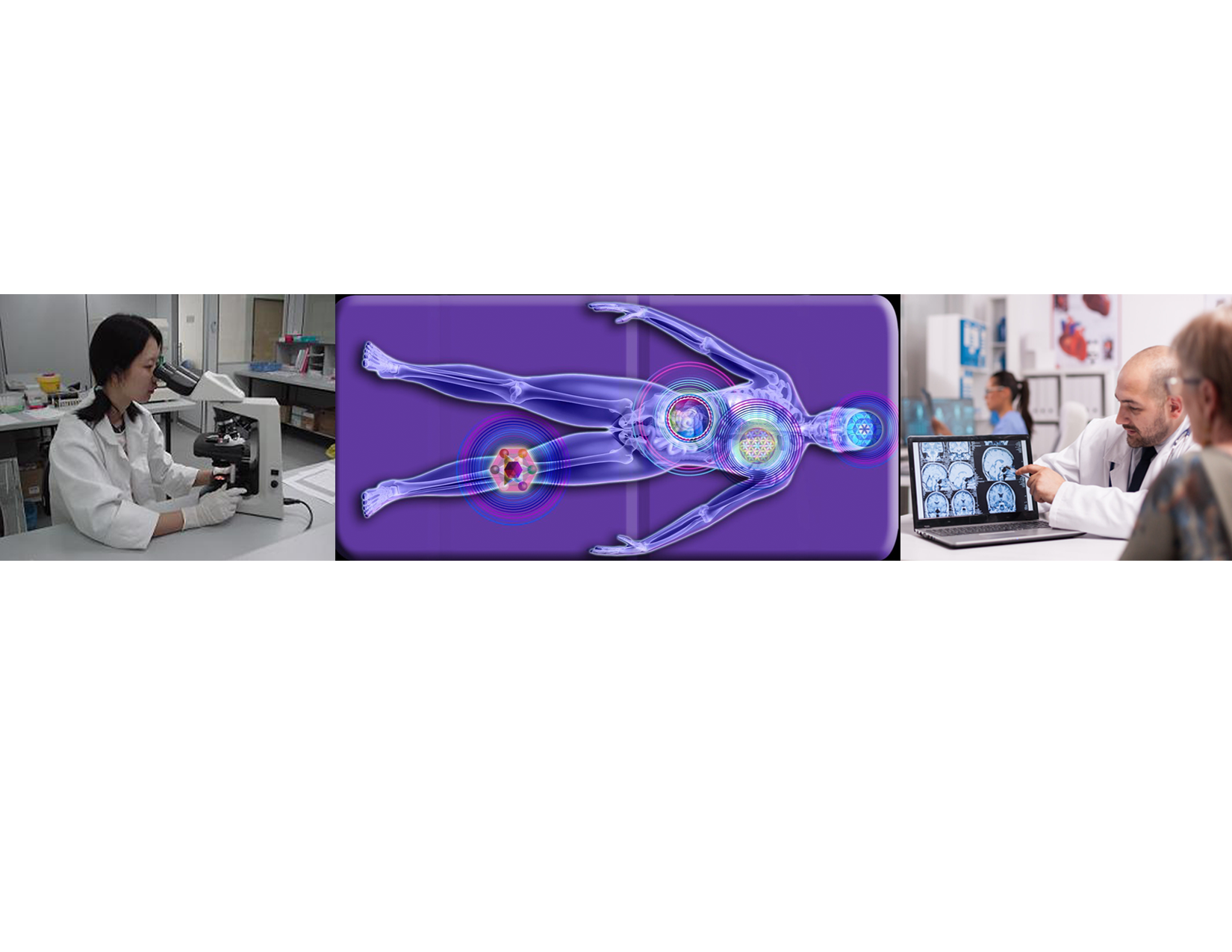Science & studies

Our Sound Healing Research Foundation
www.SoundHealingResearchFoundation.org
501 (c)(3)
Our business is based on the research generated and curated by our 501 (c)(3) non-profit foundation and the results we see in our clients. The Research Foundation continues to do research to refine music, vibroacoustics applications and treatment plans that are shared freely with the public. The Research Foundation is working directly with hospitals.
The Medical Sound Association is a group of over 400 doctors and sound therapists focused on figuring out how the body works based on Vibration. With this knowledge, we can move forward with more definitive research that will help bring sound healing and therapy into hospitals and homes. But most importantly, is to figure out how to cure every single disease with Sound, Music and Vibration — with no side effects. www.MedicalSoundAssociation.com
The Therapy Center did research with 14 people at a nearby hospital. When people with a wide range of issues were placed on the Sound Lounge, their symptoms went from an 8 to a 2 on average (on a scale of 1 – 10). That is a 75% reduction in symptoms. At the same hospital, people using the Bass Pod went from an 8 to a 1. That is an 87.5% reduction in symptoms.
A Note about the Scientific Research below – The current clinical research has not used the Sound Therapy Center’s music or the Bass Pod/Belt. We have been tracking effectiveness of each and are getting way better results.

PROVEN BENEFITS – CLINICAL RESEARCH
Clinical research from around the world has shown a myriad of positive effects from Sound and Music coupled with VibroAcoustics.
National Institute of Health
Ongoing since 1995, the National Institutes of Health runs the most extensive program in the U.S. for vibroacoustic pain and symptom reduction, treating over 50,000 patients per year. In one study, Dr. George Patrick measured the physiological and behavioral effectiveness of these interventions with 272 patients and found over 50% experienced a reduction of both pain and symptoms. He theorizes that this pain relief is relaxation-induced. Not only that, but he believes that multiple mechanisms of the body may use music/vibration to regain a healthy homeostasis.
According to studies done by George Patrick, PhD, just one sound treatment entrains about a 33 percent increase in perceived relaxation levels and a 54 percent reduction of intensity of pain, tension, fatigue, nausea, headache, and depression.
The study shows a treatment on a sound table provide the following:
• Slowed heart rate
• Reduced oxygen consumption
• Decreased blood pressure
• Slowed respiration rate
• Relaxed muscles
Mentally the study also showed:
• Deep relaxation
• Changed brainwave frequencies (generally slowing down from beta to alpha and alpha to theta or delta)
• Cleared the mind from anxiety
• Created a feeling of calm and peacefulness
As an additional benefit, vibroacoustics can help people learn to recognize the state of relaxation and, over time, become able to reach relaxation at will. Vibroacoustics is a great way to learn how to relax and develop relaxation as a daily habit!
Olav Skille Research
- Olav Skille discovered Vibroacoustic Therapy to be beneficial for conditions such as asthma, autism, cystic fibrosis, cerebral palsy, insomnia, pain and Parkinson’s disease, describing the three main areas of effect from Vibroacoustic Therapy as being (1) Spasmolytic and muscle-relaxing effect, (2) Increase in blood flow to the extremities, and (3) Marked but varying effects to the vegetative state.
- In a study performed on 40 patients experiencing lumbar regional pains it was found that, after given a VibroAcoustic Therapy session, 75% of participants experienced a complete dissolution of pain while 10% experienced a significant decrease in it.
- It’s been found that sound bed treatments can lead to a significant decrease in muscle spasms in just about any part of the body. How could you not smile after one?
- In a study that took 32 individuals in the same work space over the course of three months, it was found that after exposing them to VibroAcoustic therapy over the course of three months that there was a 80 percent decrease in anxiety levels.
- Vibracoustic Therapy, more often than not leads to a slowed heart rate and thus an improved heart rate variability (HRV), which is an indicator of stress resilience.
- Vibroacoustic treatments have shown time and time again to increase circulation, which nourishes the cells and organs of the body.
- Vibroacoustic sound therapy has been shown to reduce symptoms of ADD/ADHD in children with profound and multiple learning difficulties as well as in the elderly in long-term residential care.
- Other benefits of Vibroacoustic therapy include blood flow stimulation (making pressure sores and ulcers heal faster), swelling reduction, as well as muscle and back alleviation and joint improvement.
Jupiter Medical Center
Tests with chemotherapy patients at the Jupiter Medical Center in Florida found similar results: 62.8% reduction of anxiety and 61.6% reduction of fatigue for 27 patients in 41 vibroacoustics sessions.
Duke University
A study at Duke University Medical Center also reported significant pain reduction for 20 women who underwent surgery for various cancers. Also at Duke, vibroacoustics was tested in physical therapy sessions following total knee replacements, showing that the tools helped to increase range of motion. Additionally, heart surgeons using vibroacoustics therapy during cardiac surgery recovery found significant decreases in patients’ use of sedative and pain medication, time spent on the ventilator, time spent in the cardiac unit, and overall time spent in the hospital.
Mindful Research Study
- In a study that took 110 participants self-reporting stress levels of 4 or higher on a scale of 0-10 it was found that after spending 25 minutes on a Sound Lounge in a dimly lit room that there was a significant decrease in stress levels, with a majority of the participants saying they would recommend others to use a Sound Lounge.
- The Sound Lounge helps induce a state of deep meditation which provides benefits similar to sleep that lower blood pressure, reduce symptoms of stress, anxiety and depression; and allow for the onset of creative ideas.
Bio Therapy Study
Sound Lounge
57% Reduction in Stress
53% Reduction in Racing Thoughts
56% Reduction in Muscle Tension
52% Reduction in Impulsiveness
47% Reduction in Depression
47% Reduction in Fear
54% Reduction in Body Aches
48% Reduction in Anger
46% Reduction in Cravings
44% Reduction in Headaches
Psychological and Physiological Transformation
Music produces alterations in physiology. Soothing music can produce a response characteristic of relaxation in which autonomic, immune, endocrine and neuropeptide systems are altered. Likewise, it produces desired psychological responses such as reductions in anxiety and fear. Some responses have been linked to effects on the hemispheric functioning of the brain and the limbic system. High psychophysiological stress levels inhibit or block learning. Thus music can be the catalyst to facilitate mental suggestion, and enhance our own learning ability and self-healing capacities. Music is now being used in many areas of medicine including labor and delivery, ICU, CCU, surgery, dentistry, neurology, psychiatry, gerontology, rehabilitation, oncology, pain and stress management, and many others.
International Studies
International studies continue to attest to the effectiveness of VibroAcoustic Therapy as an intervention for clinical populations in the treatment of cancer, cardiovascular disease, hypertension, migraine headaches, gastrointestinal ulcers, Raynaud’s disease, Parkinson’s, fibromyalgia, polyarthritis, sports injury, low back pain, neck and shoulder pain, autism, insomnia, depression, and anxiety disorders.
Interviews and Testimonials
Massage therapists have found consistent themes in the use of sound tables in the way they assist in enhancing therapies by encouraging muscles, facial and connective tissues to relax more quickly, consequently increasing the depth and duration of massage effects. They often note a reduction in their physical effort, as the sound table is like having an extra set of hands. In addition, enthusiastic clients have a high return rate, and spread positive word-of-mouth that increases the client base.
